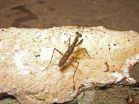(Press-News.org) People who experience chronic sleep disturbance—either through their work, insomnia or other reasons—could face an earlier onset of dementia and Alzheimer's, according to a new pre-clinical study by researchers at Temple University.
"The big biological question that we tried to address in this study is whether sleep disturbance is a risk factor to develop Alzheimer's or is it something that manifests with the disease," said Domenico Praticò, professor of pharmacology and microbiology/immunology in Temple's School of Medicine, who led the study.
Initially, the researchers looked at longitudinal studies which indicated that people who reported chronic sleep disturbances often developed Alzheimer's disease.
For the study, they used a transgenic Alzheimer's mouse model that begins developing memory and learning impairment at about one year—the equivalent of a human that is mid-50-60 years in age—and at 14-15 months have the typical human brain pathology of Alzheimer's, including amyloid plaques and tau protein tangles, the two major brain pathological/lesion signatures for the disease.
The eight week study began when the mice were approximately six months old, or the equivalent of an adult human in their 40s. One group of mice was kept on a schedule of 12 hours of light and 12 hours of darkness, while a second group was subjected to 20 hours of light and only four hours of darkness, greatly reducing their amount of sleep.
"At the end of the eight weeks, we didn't initially observe anything that was obviously different between the two groups," said Praticὸ, who is also a member of Temple's Center for Translational Medicine. "However, when we tested the mice for memory, the group which had the reduced sleep demonstrated significant impairment in their working and retention memory, as well as their learning ability."
The researchers then examined the mice's brains to look at the different aspects of the Alzheimer's pathology—mainly the amyloid plaques and tau protein tangles.
"Surprisingly, we didn't see any difference between the two groups in the amyloid plaques," noted Praticὸ. "However, we did observe that the sleep disturbance group had a significant increase in the amount of tau protein that became phosphorylated and formed the tangles inside the brain's neuronal cells."
Tau protein acts as an important component for neuronal cell health, but elevated levels of phosphorylated tau can disrupt the cells' synaptic connection or ability to transport a nutrient/chemical or transmit an electrical signal from one cell to another, said Praticò.
"Because of the tau's abnormal phosphorylation, the sleep deprived mice had a huge disruption of this synaptic connection," he said. "This disruption will eventually impair the brain's ability for learning, forming new memory and other cognitive functions, and contributes to Alzheimer's disease."
Praticὸ said that since the sleep deprived mice developed the Alzheimer's brain pathology earlier than the mice who were not deprived, sleep disturbance acts as a trigger that accelerates the pathological process of tau becoming phosphorylated and irreversibly damaging the synaptic connection.
"We can conclude from this study that chronic sleep disturbance is an environmental risk factor for Alzheimer's disease," he said. "But the good news is that sleep disturbances can be easily treated, which would hopefully reduce the Alzheimer's risk."
INFORMATION:
The researchers published their findings, "Sleep deprivation impairs memory, tau metabolism and synaptic integrity of a mouse model of Alzheimer's disease with plaques and tangles," in the journal Neurobiology of Aging.
The research was funded in part through a grant from the Alzheimer's Art Quilt Initiative.
NOTE: Copies of this study are available to working journalists and may be obtained by contacting Preston M. Moretz in Temple University Communications at pmoretz@temple.edu.
Chronic sleep disturbance could trigger onset of Alzheimer's
2014-03-18
ELSE PRESS RELEASES FROM THIS DATE:
Parents matter more than they think in how their children eat
2014-03-18
AURORA, Colo. (March 17, 2014) - Helping children learn to eat well can be a challenge. Some children happily eat whatever is put in front of them while others seem to eat like birds and exist more on air than food. A new study by a researcher at the University of Colorado School of Medicine shows that parents influence how much children eat more than they may think.
In this collaborative study between the CU School of Medicine, Baylor College of Medicine and University of Alabama Birmingham, researchers observed normal, everyday mealtimes in the homes of 145 parents ...
An end to animal testing for drug discovery?
2014-03-18
DALLAS, March 18, 2014 — As some countries and companies roll out new rules to limit animal testing in pharmaceutical products designed for people, scientists are stepping in with a new way to test therapeutic drug candidates and determine drug safety and drug interactions — without using animals. The development of "chemosynthetic livers," which could dramatically alter how drugs are made, was presented at the 247th National Meeting & Exposition of the American Chemical Society (ACS), the world's largest scientific society.
The meeting features more than 10,000 presentations ...
Form of epilepsy in sea lions similar to that in humans, Stanford researchers find
2014-03-18
STANFORD, Calif. — California sea lions exposed to a toxin in algae develop a form of epilepsy that is similar to one in humans, according to a new study led by Stanford University School of Medicine researchers.
Every year, hundreds of sea lions wash up along the California coast, suffering seizures caused by exposure to domoic acid, a neurotoxin that can produce memory loss, tremors, convulsions and death. Domoic acid is produced by algae blooms that have been proliferating along the coast in recent years, accumulating in anchovies and other small fish that the sea ...
New view of supernova death throes
2014-03-18
WASHINGTON D.C., March 18, 2014 -- A powerful, new three-dimensional model provides fresh insight into the turbulent death throes of supernovas, whose final explosions outshine entire galaxies and populate the universe with elements that make life on Earth possible.
The model is the first to represent the start of a supernova collapse in three dimensions, said its developer, W. David Arnett, Regents Professor of Astrophysics at the University of Arizona, who developed the model with Casey Meakin and Nathan Smith at Arizona and Maxime Viallet of the Max-Planck Institut ...
Nineteen new speedy praying mantis species discovered that hide and play dead to avoid capture
2014-03-18
A scientist has discovered 19 new species of praying mantis from Central and South America. The new species of bark mantises were discovered in tropical forests and also found among existing museum collections. Dr. Gavin Svenson, curator of invertebrate zoology at The Cleveland Museum of Natural History, described the new species and published a revision of the genus Liturgusa in the open access journal ZooKeys.
Svenson collected the insects from eight countries in Central and South America, as well as gathered hundreds of specimens from 25 international museums in ...
Child ADHD stimulant medication use leads to BMI rebound in late adolescence
2014-03-18
A new study from researchers at Johns Hopkins Bloomberg School of Public Health found that children treated with stimulants for attention deficit hyperactivity disorder (ADHD) experienced slower body mass index (BMI) growth than their undiagnosed or untreated peers, followed by a rapid rebound of BMI that exceeded that of children with no history of ADHD or stimulant use and that could continue to obesity.
The study, thought to be the most comprehensive analysis of ADHD and stimulant use in children to date, found that the earlier the medication began, and the longer ...
Nanopores control the inner ear's ability to select sounds
2014-03-18
Even in a crowded room full of background noise, the human ear is remarkably adept at tuning in to a single voice — a feat that has proved remarkably difficult for computers to match. A new analysis of the underlying mechanisms, conducted by researchers at MIT, has provided insights that could ultimately lead to better machine hearing, and perhaps to better hearing aids as well.
Our ears' selectivity, it turns out, arises from evolution's precise tuning of a tiny membrane, inside the inner ear, called the tectorial membrane. The viscosity of this membrane — its firmness, ...
Variations in eye structure and function may reveal features of early-stage Alzheimer's disease
2014-03-18
LOS ANGELES (March 18, 2014) – Investigators at the Cedars-Sinai Regenerative Medicine Institute have discovered eye abnormalities that may help reveal features of early-stage Alzheimer's disease. Using a novel laboratory rat model of Alzheimer's disease and high-resolution imaging techniques, researchers correlated variations of the eye structure, to identify initial indicators of the disease.
Alzheimer's disease is the leading cause of dementia, which is characterized by loss of memory and a progressive decline in cognitive function. To date, more than 26 million people ...
Children exposed to methamphetamine before birth have increased cognitive problems
2014-03-18
LOS ANGELES – (March 18, 2014) – In the only long-term, National Institutes of Health-funded study of prenatal methamphetamine exposure and child outcome, researchers found youngsters exposed to the potent illegal drug before birth had increased cognitive problems at age 7.5 years, highlighting the need for early intervention to improve academic outcomes and reduce the potential for negative behaviors, according to the study published online by The Journal of Pediatrics.
The researchers studied 151 children exposed to methamphetamine before birth and 147 who were not ...
Crop intensification can be a long-term solution to perennial food shortages in Africa
2014-03-18
Farmers in Africa can increase their food production if they avoid over dependence on chemical fertilizers, pesticides and practice agricultural intensification - growing more food on the same amount of land – using natural and resource-conserving approaches such as agroforestry.
According to scientists at the World Agroforestry Centre (ICRAF), crop production in Africa is seriously hampered by the degradation of soil fertility, water and biodiversity resources. Currently, yields for important cereals such as maize have stagnated at 1 tone per hectare. Climate change ...


